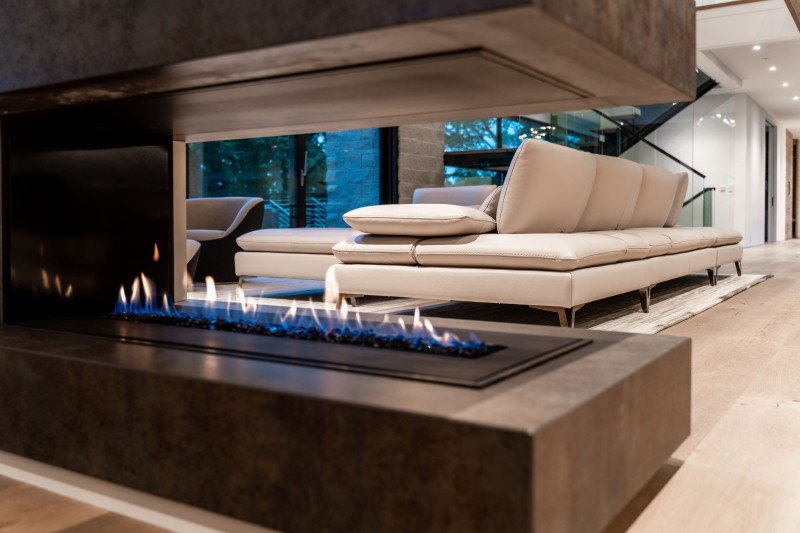Energy Efficient Fireplaces For Sale: A Comprehensive Guide
In the last few years, the concentrate on energy efficiency in home heating has magnified due to increasing energy costs and increasing environmental concerns. Energy-efficient fireplaces offer a sustainable alternative to traditional heating methods, providing warmth and atmosphere without the extreme fuel usage connected with traditional fireplaces. This article explores the advantages of energy-efficient fireplaces, checks out the numerous types readily available, supplies valuable buying pointers, and responses often asked questions.
The Benefits of Energy Efficient Fireplaces
Energy-efficient fireplaces provide various advantages that extend beyond mere warmth. Here are some essential advantages:
- Reduced Energy Consumption: These fireplaces consume less fuel while producing a comparable quantity of heat, making them affordable.
- Lower Emissions: With advanced technology created to burn fuel more entirely, energy-efficient fireplaces substantially lower harmful emissions.
- Improved Home Value: Installing a modern, energy-efficient fireplace can increase a home's resale value and visual appeal.
- Increased Heating Capacity: Many energy-efficient models offer much better heating protection, focusing heat in larger locations compared to traditional choices.
- Style Versatility: Available in various styles, energy-efficient fireplaces can complement any interior decoration style.
- Alternative Fuel Options: Many energy-efficient fireplaces can run on eco-friendly resources such as wood pellets, bioethanol, or gas.
Kinds Of Energy Efficient Fireplaces
Picking the ideal energy-efficient fireplace for a home depends on specific preferences, area restrictions, and heating requirements. Below are the most common types of energy-efficient fireplaces available for sale:
| Fireplace Type | Description | Efficiency Rating |
|---|---|---|
| Gas Fireplaces | Direct vent fireplaces that use natural gas or propane for effective heating. | 70-90% |
| Wood-Burning Stoves | Created to burn wood efficiently, these stoves consist of secondary combustion systems. | 65-85% |
| Pellet Stoves | Usage compressed wood or biomass pellets, instantly feeding them into the burn chamber. | 80-90% |
| Electric Fireplaces | Supply heat through electric coils; have the advantage of being simple to set up and keep. | 100% (Heating Element) |
| Bioethanol Fireplaces | Produce flame through burning bioethanol; often vent-free and simple to install. | Differs by design |
Buying Tips for Energy Efficient Fireplace s
When buying an energy-efficient fireplace, one ought to consider the following:
- Understand Heating Requirements: Determine the heating needs of your area. Examine room size and insulation levels to select the appropriate model.
- Check for Certifications: Look for designs licensed by appropriate requirements organizations (e.g., EPA, UL) that verify their efficiency and safety.
- Consider Local Regulations: Check your region's policies relating to fireplace setup, especially for wood-burning models.
- Assess the Fuel Options: Determine the most affordable and convenient fuel source for your way of life, whether it be gas, pellets, electrical energy, or bioethanol.
- Focus on Features: Look for features like programmable thermostats, remote controls, and fan systems that can further boost efficiency and convenience.
- Look For Professional Installation: Proper setup is vital for efficiency and security. Constantly speak with trusted installers familiar with energy-efficient designs.
FAQs About Energy Efficient Fireplaces
1. How do energy-efficient fireplaces lower heating expenses?
Energy-efficient fireplaces take in less fuel and offer the same or typically more heat than traditional models. This efficiency equates to reduce heating expenses in time.
2. Are energy-efficient fireplaces simple to maintain?
Yes, while regular cleansing and servicing are vital, numerous energy-efficient designs are simpler to keep than traditional wood-burning fireplaces. Gas fireplaces usually need less maintenance.
3. Can I use my existing chimney with an energy-efficient fireplace?
Not constantly. Some energy-efficient designs require chimney adjustments or particular venting services. Consult an expert installer to assess your scenario.
4. How do I select between gas and wood-burning fireplaces?
Consider elements such as aesthetic appeals, ease of use, heating preferences, fuel schedule, and regional emission regulations when deciding between gas and wood-burning fireplaces.
5. Are electric fireplaces energy-efficient?
While electric fireplaces are 100% efficient at transforming electrical power into heat, they may not be the most cost-effective option depending upon local electricity rates. Nevertheless, they are low maintenance and easy to install.
Buying an energy-efficient fireplace is a clever choice for homeowners seeking to lower their heating costs while making an eco-friendly decision. As developments in innovation continue, the variety and efficiency of energy-efficient fireplaces will only improve, ensuring that customers can delight in comfort and heat without guilt. By assessing private needs, understanding available choices, and following professional suggestions, house owners can find the ideal energy-efficient fireplace that boosts their home and provides trustworthy, sustainable heat for several years to come.
Exploring the alternatives presently offered in the market, combined with informed decision-making, will cause an energy-efficient fireplace that meets both financial and visual choices. As energy efficiency becomes more vital in modern living, these ingenious fireplaces stand as a testament to the possibilities of combining design, comfort, and sustainability.

